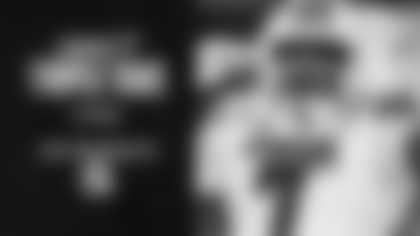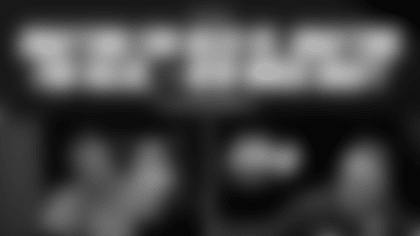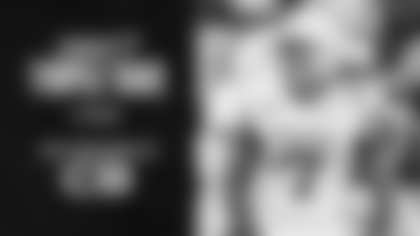Another in a series of stories chronicling the 52 playoff games in Steelers history.
By the start of the 1983 season, the Steelers had endured many retirements, they had been forced to adapt to many changes. The Steel Curtain was no more, both from the standpoint of personnel, what with Joe Greene, L.C. Greenwood, Dwight White and Ernie Holmes all retired, but also from the fact the scheme had been switched from a 4-3 to the 3-4. But nothing was as dramatic as what they were about to live through for the first time in a very long time.
Life without Terry Bradshaw.
In another year, Jack Lambert's career would be ended by a dislocated big toe, but at this point in franchise history the most important appendage to them was Bradshaw's right arm. More specifically, his right elbow.
Sometime in the months that would follow the 1983 NFL season, a doctor would perform surgery on that very valuable elbow, but in September 1983, the medical plan agreed to by the Steelers and Bradshaw called for rest and treatment. Several times over the season, the false hope for Bradshaw's return to the starting lineup would crystallize, but then inevitably it evaporated. Deadlines passed. More deadlines were set. They passed as well. And on and on it went.
The sporting press in Pittsburgh dutifully would attend each practice session from the start of the 1983 season and report the one thing everyone wanted to know, and it usually read like this: Bradshaw didn't throw today.
Coach Chuck Noll never was one who spent any time worrying – or even talking – about injured players, and so when the Steelers opened their regular season at Three Rivers Stadium against the Denver Broncos and rookie sensation John Elway, it was Cliff Stoudt starting at quarterback and fourth-year pro Mark Malone as the No. 2.
It's often said an opener can serve as a forecast, as an indicator of the way a team's season might unfold. In that opener against the Broncos, Elway, in his first NFL game, completed 1-of-8 for 14 yards before being lifted for Steve DeBerg, but Denver won because the Steelers turned the ball over seven times and committed 11 penalties for 121 yards.
The 1983 Steelers had some talent, but they also had their flaws, and when they turned the ball over and/or were highly penalized they were unable to make the kinds of plays necessary to overcome those things. When they did that – three interceptions vs. Green Bay, five interceptions vs. Detroit on Thanksgiving Day, three fumbles and two interceptions vs. Cincinnati, two interceptions combined with 11 penalties in Cleveland – they lost decisively.
All the while, the Bradshaw watch continued, never really lessening in its intensity either. In a fitting representation of the circus it had become, broadcaster extraordinaire Myron Cope was contacted by some quack who claimed to have a myna bird that possessed magical healing powers. So, in the kind of grand display Bradshaw loved, the magical myna bird was brought to the Steelers locker room and it perched upon Bradshaw's right elbow.
Bradshaw was both entertained and entertaining throughout this spectacle, and it was covered by the media like a presidential inauguration. The highlight was when Bradshaw, in the finest style of a Southern preacher, boomed, "Cope, I can feel the power." The only thing Bradshaw got out of the visit from the magical myna was a laugh.
When the Steelers didn't beat themselves, they were good enough to win 10 games, finish 10-6 and claim the AFC Central Division title over the 9-7 Cleveland Browns. The clincher came in the penultimate game of the regular season, against the New York Jets in what was the final NFL game to be played at Shea Stadium. But to Steelers fans, this was a game that always will be remembered as Terry Bradshaw's final appearance at quarterback for the Pittsburgh Steelers.
That it would be Bradshaw's last NFL game wasn't known at the time, but what was known was the Steelers needed a hero because they needed a win. They were a team that started 9-2 but found itself mired in a three-game losing streak that had it reeling at 9-5 and facing back-to-back road trips – at New York and then at Cleveland.
In New York, Bradshaw dragged his 36-year-old right arm out for one grand finale in the media capital of the world. Clearly not himself, Bradshaw still mustered what he had and authored a final great performance.
Bradshaw played two complete series and directed touchdown drives of 77 yards in eight plays and 72 yards in nine plays. He completed 5-of-8 for 77 yards and the two scores – 17 yards to Gregg Garrity and 10 yards to Calvin Sweeney. Above all else, he inspired the team to a 34-7 win that clinched the division championship and a second straight appearance in the playoffs.
But unfortunately for the Steelers, Terry Bradshaw's 10th trip to the playoffs was only to be as a spectator. He still looked hale and hearty standing there on the sideline of the Los Angeles Coliseum in his uniform, but the self-described gunslinger had no more bullets.
Against a first-round opponent as formidable as the 1983 Raiders – who would go on to win the Super Bowl in a rout of the Washington Redskins – the Steelers would find themselves woefully short on weapons. Bradshaw's situation had drawn the most attention, but the 1983 Steelers also were without John Stallworth for the bulk of the season. Franco Harris averaged just 3.6 yards a carry, and after Calvin Sweeney, who led the team with 39 catches, no other wide receiver had even as many as 20.
If anything, the Steelers went to the West Coast for a playoff game against the Raiders on the strength of their defense, a unit that rolled up 50 sacks and 45 takeaways. Cliff Stoudt would finish with 12 touchdown passes as the starting quarterback in 15 games; the Steelers defense scored seven touchdowns itself.
Any hope the Steelers had to upset the 12-4 Raiders rested with its defense, but looming over everything was the specter of the turnovers.
The game was played on Sunday, Jan. 1, and it wasn't much of one for long, and the fact it wasn't can be traced to two poor decisions by the Steelers, the first by their coach and the second by their quarterback.
Taking the opening kickoff, the Steelers marched 78 yards in eight plays, but Chuck Noll took the oomph factor out of the whole thing by opting for a field goal on fourth-and-inches from the Raiders goal line. The Steelers defense then forced a Raiders punt, and after Ray Guy pinned the Steelers offense deep in its territory, Stoudt was next in line to make a poor decision.
His out-pattern to Calvin Sweeney on first down was intercepted by Raiders cornerback Lester Hayes and returned 18 yards for a touchdown, and the impact on the respective teams was far more than the seven points it added to the scoreboard.
Hayes' interception simultaneously inflated the Raiders and deflated the Steelers. The Raiders scored 10 more points before the end of the half, and then 17 more in their first three possessions of the second half.
When the 38-10 debacle was over, the Raiders were on their way to the third Super Bowl championship in their history, while the Steelers were about to embark on life without Terry Bradshaw. This time, permanently.
|
Steelers |
|
3 |
0 |
7 |
0 |
|
10 |
|
Raiders |
|
7 |
10 |
21 |
0 |
|
38 |
|
TEAM |
QTR |
PLAY |
|
Pit |
1 |
Anderson 17 FG |
|
LA |
1 |
Hayes 18 interception return (Bahr kick) |
|
LA |
2 |
Allen 4 run (bahr kick) |
|
LA |
2 |
Bahr 45 FG |
|
LA |
3 |
King 9 run (Bahr kick) |
|
LA |
3 |
Allen 49 run (bahr kick) |
|
Pit |
3 |
Stallworth 58 pass from Stoudt (Anderson kick) |
|
LA |
3 |
Hawkins 2 run (Bahr kick) |
|
TEAM STATISTICS | ||
|
|
Pit |
LA |
|
First Downs |
17 |
24 |
|
Third Downs |
4-14 (29%) |
5-13 (38%) |
|
Total Net Yds |
331 |
413 |
|
Plays-Avg |
64-5.2 |
68-6.1 |
|
Rushing Yds |
162 |
188 |
|
Att-Avg |
32-5.1 |
33-5.7 |
|
Passing Yds |
169 |
225 |
|
Att/Comp/Int |
27-13-1 |
34-21-0 |
|
Punts-Avg |
8-40.9 |
6-41.3 |
|
Penalties-Yds |
4-30 |
2-15 |
|
Fumbles-Lost |
2-1 |
2-0 |
- 1972 AFC Divisional Playoff - 1972 AFC Championship Game - 1973 AFC Divisional Playoff - 1974 AFC Divisional Playoff - 1974 AFC Championship Game - Super Bowl IX - 1975 AFC Divisional Playoffs
- 1975 AFC Champiionship Game - Super Bowl X - 1976 AFC Divisional Playoff - 1976 AFC Championship Game - 1977 AFC Divisional Playoffs - 1978 AFC Divisional Playoff - 1978 AFC Championship - Super Bowl XIII - 1979 AFC Divisional Round - 1979 AFC Championship - Super Bowl XIV - 1982 AFC Tournament - 1983 AFC Divisional Playoff





